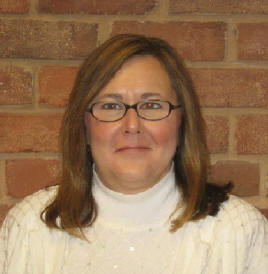Patty McDermitt
Adams County Master Gardener
 The first time I heard the words, "Exotic Invasive," I thought to myself, what are they talking about? I knew about invasive plants, but exotic? I
thought perhaps they were rare plants from remote areas of the world. Thanks to my Master Gardener training, I learned about this issue, became passionate about the subject,
and continue learning more each day about this environmental concern.
The first time I heard the words, "Exotic Invasive," I thought to myself, what are they talking about? I knew about invasive plants, but exotic? I
thought perhaps they were rare plants from remote areas of the world. Thanks to my Master Gardener training, I learned about this issue, became passionate about the subject,
and continue learning more each day about this environmental concern.
Webster defines the term exotic as "introduced from another country: not native to the place where found." And invasive, "of, relating to, or
characterized by military aggression: tending to spread; especially: tending to invade healthy tissue: tending to infringe."
Characteristics of Invasive Plants
- Not native to North America
- Spreads by the reproduction of roots or shoots or by seed, producing numerous seeds that disperse and sprout easily
- Mature quickly
- Can grow in many different conditions
There are so many plants that have been imported to our area because we find them attractive and want them for our yards. I am no exception. We all
think that if a plant is available through local stores and distributors that it must be safe to grow in this area. I made that assumption too until I learned about exotic
invasive plants. I didnít realize how serious this problem is, or how costly, until I started researching the issue.
Why is this an issue? How do I know if I have invasive plants? What makes them invasive plants? Well I hope I answer some of these questions. What
makes this so serious is that our native plants and bird populations are affected by the encroachment of invasive plants that have been brought to our environment - by us!
For example, who would guess that our favorite Butterfly Bush is bad for our local environment? Many plants that are invasive choke out our native plants and nesting areas
for our birds. As the plants take hold and continue to grow unchecked, they destroy our native plants to the point of extinction and birds lose their habitat.
Not all exotic plants are invasive in all parts of the county. To find out if a beloved plant is invasive to our environment, contact your local
extension office. They will be able to tell you if the plant you are considering is an exotic invasive and provide a list of local "problem" plants. Here is a link to the
website of the Pennsylvania Department of Conservation and Natural Resources that lists invasive plants in Pennsylvania:
www.dcnr.state.pa.us/index.aspx
A local place of real concern about exotic invasives is the Gettysburg Battlefield. This open space is a test ground for this issue. Here are a few
facts about the Gettysburg Battlefield I found that will surprise you about our local environment.
- There are 172 Exotic Non-Natives on the Battlefield
- 42% of Native Plants are at risk of being eliminated $122 billon dollars have been spent to try and eradicate invasive plants by the federal
government
- The Deer Management Program helps eliminate the spread of seeds
- The highest density of invasives are in the south and east sides of the Battlefield 575 acres have been treated since 1989 Ė usually 80 acres a
year
- The Park considers the following plants the most invasive: Multi-flora Rose, Japanese Honeysuckle, Japanese Barberry, Tree of Heaven, Mile-a-Minute
weed, Garlic Mustard, Autumn Olive, Japanese Stilt grass, Teasel and Tartarian honeysuckle.
More information can be found at the National Park Service website for the Gettysburg National Military Park at
www.nps.gov/gett/naturescience/environmentalfactors.htm
Before you make plant selections, please review the list and donít plant invasives on your property. It will help our environment, and those lovely
little birds we all enjoy so much wonít lose their habitat. In fact, why not just plant natives? For a sampling of native plants, visit the Adams County Extension Office at
670 Old Harrisburg Road, Gettysburg, and see for yourself how beautiful they can be by touring the Native Garden maintained there.
And yes, I do practice what I preach. Recently, Iíve taken measures to eradicate exotic invasive from my own yard, cutting down what appeared to be a
perfectly good tree knowing that, over time, even this one little tree would contribute to the growing problem we face in Adams County. Take a look at your yard and see what
you can do to help fight this problem.
Read other articles on ecological gardening & native plants
Read other article by Patty McDermitt